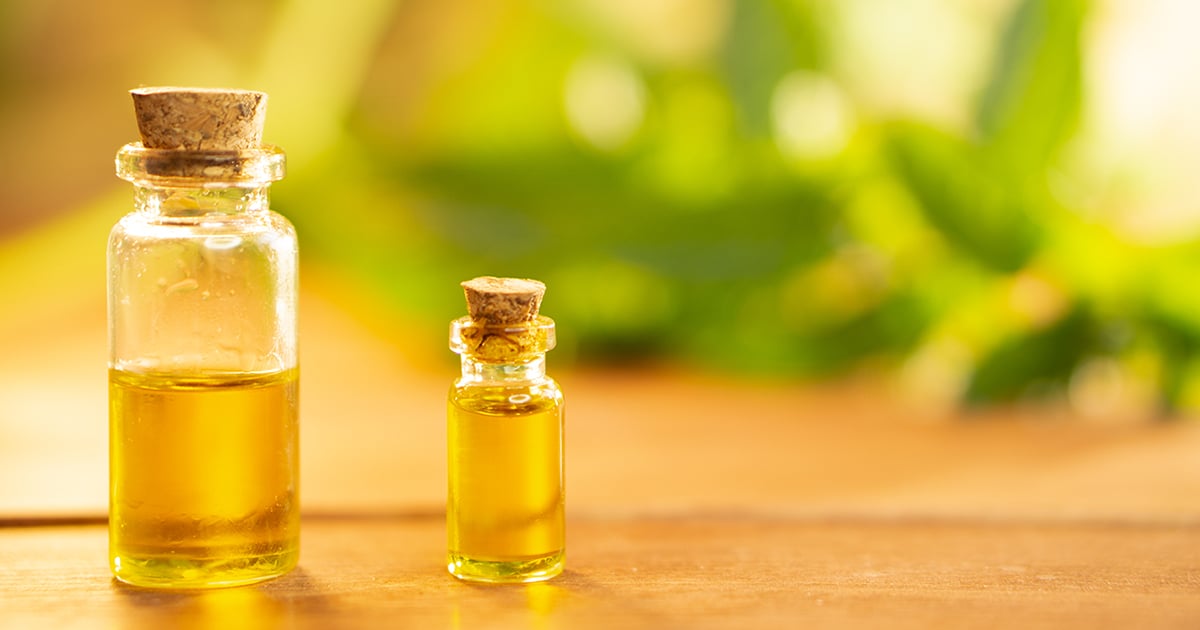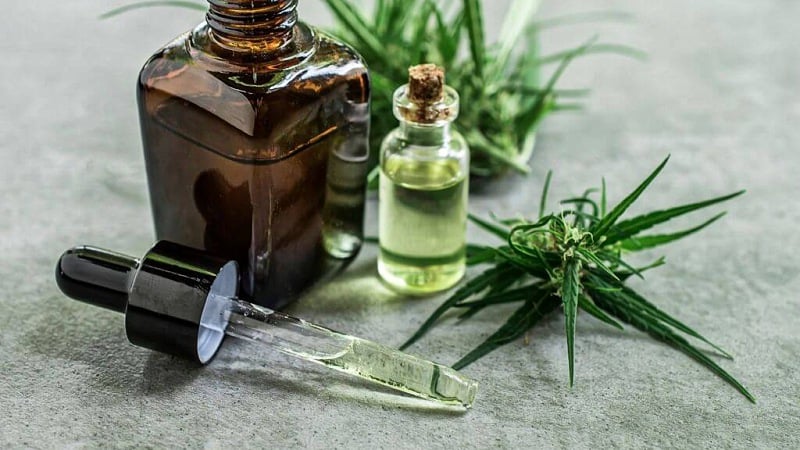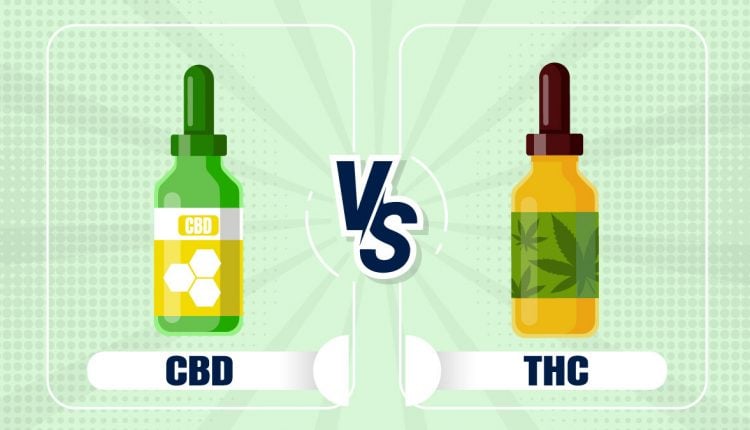Now that marijuana or cannabis has become more accepted in the U.S, many people have become curious about the world of medical and recreational marijuana.
The most common cannabis extracts are CBD and THC.
While both have their pros and cons, they’re entirely different.
Learn about the similarities and differences between these two popular cannabinoids, which one you should use, and what to watch out for as you shop.
What’s the Difference Between CBD and THC?
Cannabidiol (CBD) and tetrahydrocannabinol (THC) are two different compounds extracted from the cannabis plant.
While many people are aware that they’re two separate substances, it’s a bit difficult to tell the differences between these compounds.
One key fact to remember is that both hemp and marijuana are sources of CBD. It means you can obtain CBD oil from either of these plants. However, hemp contains less than 0.3% THC, while marijuana has a much higher THC content.
You will commonly find CBD sold in various forms such as oils, edibles, gummies, and topicals. Marijuana is sold in many forms, available in oils, edibles, tinctures, and capsules, and can be consumed in different ways other than smoking.
Marijuana is in high demand, even in areas where it’s illegal. This is because THC, its psychoactive constituent, gives the feeling of being “high” when people use it. There are many ways to consume CBD and THC
CBD and THC are different compounds, but both affect the body’s endocannabinoid system (ECS). They have that in common but differ in how they interact with the ECS.
CBD vs. THC Chemical Differences
CBD and THC have pretty similar chemical structures. Both have the same molecular formula — 30 hydrogen atoms, 21 carbon atoms, and 2 oxygen atoms. Their molecular composition is similar, but their arrangement is a little different.
This difference in the arrangement of elements is why CBD and THC provide different effects on the body’s endocannabinoid system (ECS).
How the body’s endocannabinoid receptors react to THC or CBD can affect the brain’s release of neurotransmitters. These neurotransmitters are the chemicals that act as messengers between cells, managing pain, sleep, immune system functions, mood, memory, and other bodily functions.
CBD vs. THC Legal Differences
In the U.S., both THC and marijuana are considered controlled substances. It means that selling, consuming, and cultivating marijuana is not legal under federal law.
However, the legal status changes when it comes to state laws. There are 33 states (plus Washington DC) that have policies enacted to allow some form of medical or recreational use of marijuana as of July 2020. But the exact details differ in each state.
Some states legalized its medical and recreational use, while others have only legalized medical marijuana. Some states also barred sales for recreational purposes but allowed the growing and possessing of recreational marijuana.
The legal status of CBD and THC is different for every state. CBD derived from hemp is legal in all 50 states, but CBD or THC derived from marijuana are legal in roughly half of the United States.
Also, the laws about cannabis and its derivatives change rapidly. You should always check your local state laws before using any product containing THC or CBD.
CBD vs. THC Psychoactive Effects

The psychoactive compound that produces the “high” is THC.
CBD is non-intoxicating which means it will not make you feel high.
The difference in psychoactivity stems from the fact that THC and CBD affect different receptors in the brain. This causes different effects on the body, with THC producing feelings of being “high” while CBD does not.
To date, scientists have identified two cannabinoid receptors located in different areas of the body. Since they are in various areas of the body, these receptors help regulate different body functions.
A) CB1 Receptors
CB1 receptors are primarily found in the brain but also throughout the entire body. When CB1 receptors are activated via endocannabinoids, it causes a shift in neurotransmitters like serotonin. This is what’s behind the psychoactive effects of CB1 agonists like THC.
CBD, on the other hand, doesn’t bind with CB1. It only helps to activate the receptor by increasing its anandamide levels. CBD can also stop THC from binding with this receptor, which neutralizes THC’s intoxicating effects.
B) CB2 Receptors
The other receptor is the CB2 receptor, primarily found in cells in the immune system and related structures. CB2 receptors are prominent in the gastrointestinal system and spleen, which affects appetite, immune system functions, and pain management.
THC can bind to both CB1 and CB2 receptors, but CB1 seems to be its main target. But because it binds to both, it also helps relieve pain and improve mood.
CBD, on the other hand, more frequently interacts with CB2 receptors. CBD’s interaction with CB2 receptors promotes anti-inflammatory response in the body, which may also have some benefits for cancer patients.
CBD vs. THC Medical Benefits
People use CBD products for their many potential medical benefits. CBD may help alleviate arthritis pain, diabetes, Crohn’s disease, multiple sclerosis, and epilepsy. Also, CBD is often used to control chronic pain, insomnia, inflammation, and anxiety.
THC and CBD often have similar effects and are used to treat many of the same conditions. But there are important differences in their use.
CBD is most often used therapeutically, relieving symptoms of ailments such as:
- Depression
- Anxiety
- Seizures
- Post-traumatic stress disorder (PTSD)
- Migraines
- Inflammation
On the other hand, THC is the active ingredient in medical marijuana; people use it to alleviate a wide range of health conditions, including:
- Tremors
- Insomnia
- Glaucoma
- Pain from arthritis, fibromyalgia, & migraines
- Chemotherapy-induced nausea
- Poor appetite caused by cancer treatment
The FDA has not approved cannabis yet for treating any conditions. However, it has approved certain drugs that contain THC or CBD.
Some of these medications include:
- Marinol and Syndros contain dronabinol, which is synthetic THC. Marinol and Syndros can treat vomiting and nausea caused by the effects of chemotherapy in treating cancer.
- Epidiolex contains CBD, which is used to treat seizures related to Lennox-Gastaut and Dravet syndromes, forms of epilepsy.
- Cesamet contains nabilone, a synthetic substance similar to THC. It is used to treat appetite problems and weight loss caused by HIV/AIDS and chemotherapy.
Benefits of Using CBD & THC Together

Is it safe to use CBD and THC together?
Cannabis plants have over 120 different phytocannabinoids that include CBD and THC. They act on the body’s endocannabinoid system, so your body remains in homeostasis or balance.
THC and CBD are just two of the many phytocannabinoids. You can take them in different forms and a variety of ways, either separately or together.
So what happens if you use them together?
Some research suggests that taking them together or with terpenes (organic compounds found in the cannabis plant) increases their effects. This is said to be due to what is called the entourage effect.
According to research, phytocannabinoids and terpenes offer additional medical benefits when taken together. Several studies found they can benefit people suffering from anxiety, pain, inflammation, fungal infection, epilepsy, and cancer.
Another notable effect is the reduced side effects of THC, which include hunger, anxiety, and sedation. Taking CBD with THC is said to help reduce these side effects. However, more research is needed to confirm these claims.
CBD vs. THC Side Effects
CBD is relatively safe even when you take it in large doses. According to research, the side effects of CBD mainly occur due to interactions with other medicines.
The common side effects of CBD include:
- Fatigue
- Diarrhea
- Dizziness
- Weight loss
- Appetite changes
THC, on the other hand, has several temporary side effects. These symptoms include:
- Red eyes
- Dry mouth
- Anxiety
- Memory loss
- Increased heart rate
- Slower reaction times
- Coordination problems
The side effects of THC have to do with its psychoactive properties. The good thing is neither CBD nor THC are fatal.
But the high use of THC may have some long-term adverse psychiatric effects, especially in adolescents who took large amounts of THC.
Drug Testing For CBD & THC
Drug tests are used to detect the amount of THC in your blood as set forth by guidelines from the Substance Abuse and Mental Health Services (SAMHSA).
In other words, drug testing is only concerned with the THC compound present. It’s this compound that can create problems concerning travel or employment.
It will take a huge dose of CBD to trigger a false-positive result on a drug test if your test is looking for THC content in the blood.
Drug test center experts estimate that CBD users would have to invest more than 2,000 mg to produce a “false positive” on their drug test. For a point of reference, the average user of CBD consumes between 120 and 160 mg. daily.
Summary: CBD vs. THC Similarities & Differences
CBD and THC are often confused as being the same thing because of how they look and come from the same plant. But these compounds have many important differences.
While their chemical makeup is similar, each cannabinoid has a different effect on the body. THC is commonly used to manage symptoms associated with insomnia, glaucoma, pain, nausea, and appetite issues. CBD is often taken for relief from anxiety, depression, anxiety, migraines, and inflammation. CBD and THC can be used together to increase their effects on the body and help with anxiety, pain, and inflammation.
THC produces psychoactive effects resulting from its more commonly binding with CB1 receptors in cells. CBD does not produce this “high” as it does not react the same way with the body.
THC is federally illegal, while CBD is legal to use in most states. As a result, drug testing focuses on detecting THC levels in the blood and can cause employment issues. CBD does not pose such a threat for users.
But before taking CBD or THC products, be sure to consult with a medical professional to ensure that these products are safe to use with any other medication you may be taking.
Reference Cited:
- Atakan, Z. (2012). Cannabis, a complex plant: Different compounds and different effects on individuals. Therapeutic advances in psychopharmacology, 2(6), 241-254 [1]
- Ferber, S. G., Namdar, D., Hen-Shoval, D., Eger, G., Koltai, H., Shoval, G., … & Weller, A. (2020). The “entourage effect”: terpenes coupled with cannabinoids for treating mood disorders and anxiety disorders. Current Neuropharmacology, 18(2), 87-96. [2]
- National Center for Chronic Disease Prevention and Health Promotion, Centers for Disease Control and Prevention. What You Need to Know About Marijuana Use in Teens. April 13, 2017. Marijuana and Public Health [3]
